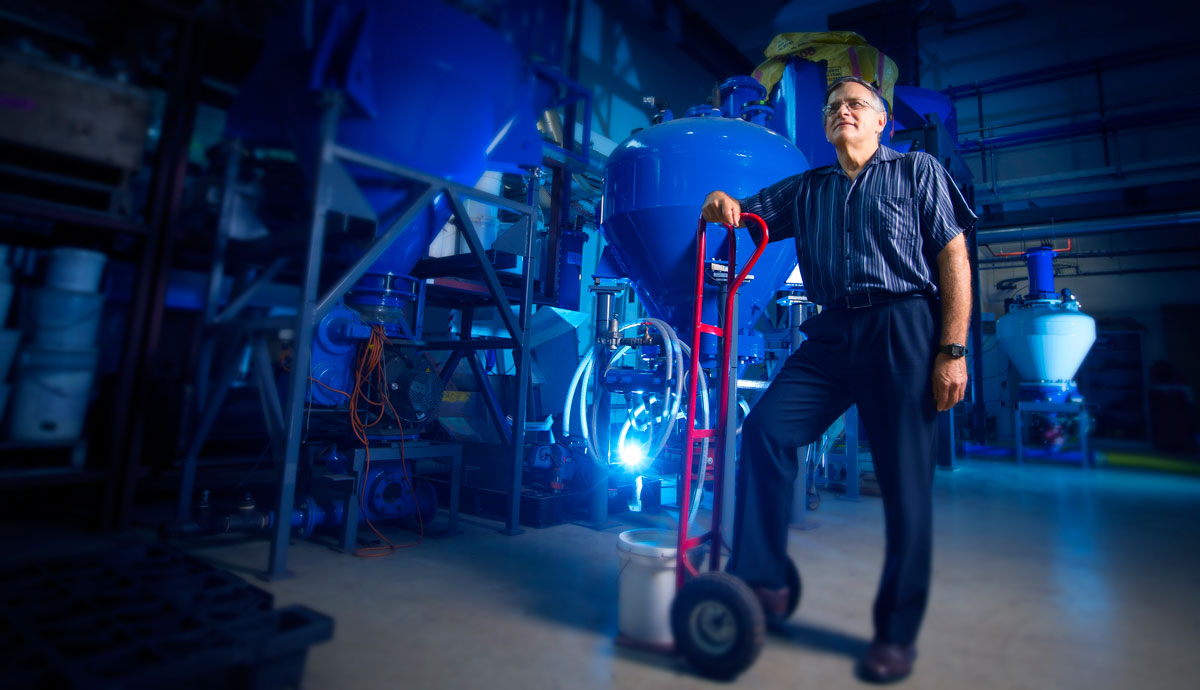February 17, 2016
China research collaboration a breath of fresh air
UOW engineering ingenuity is helping Chinese industrial manufacturers tackle the country’s massive pollution problem.
In late 2015, north-eastern China experienced air pollution levels 50 times higher than limits deemed safe by the World Health Organisation. The episode was considered one of the worst since authorities began releasing air quality data in 2013.
While much of the problem can be traced to vehicle emissions, moving and burning the vast quantities of raw materials needed to power the nation of more than 1.3 billion people contribute to its dust and pollution events.
Add the already well publicised pollution problems in Beijing, which were put under the microscope around the time of the 2008 Olympics, and the increased public awareness and outcry has led to government policies and incentives to cut emissions.
Industry too, sees a role to play, and two major manufacturers of heavy equipment, Fujian Longking Co Ltd, based in Fujian Province, and Tidfore Heavy Equipment Group, based in Hunan Province, have signed a $1.6 million joint research and development contract with UOW’s Faculty of Engineering and Information Sciences (EIS).
The two companies have a long history of providing heavy equipment for materials handling in ports and terminals, as well as manufacturing and supplying pollution control technology for the power generation industry.
Under the leadership of Associate Professor Peter Wypych, the joint research collaboration will establish the International Solids Handling Research Institute (ISHRI) at UOW to undertake collaborative research in bulk materials handling technology.
“Dust suppression is a serious problem,” Professor Wypych said. “But the Chinese Government can’t simply legislate measures that are too harsh because it would cause massive disruption and loss of jobs on a scale of magnitude we can’t imagine.
“Instead, the Government is providing incentives for companies to reduce pollution and comply with gradual changes in regulations.
“The collaboration partners are progressive companies who see an opportunity to do things right from square one and be able to produce equipment for industrial operations that takes into account environmental, reliability and community concerns.”
Professor Wypych has developed sophisticated computer modelling and design technology that aids the design and manufacture of reliable bulk materials handling operations, as well as sustainable dust suppression systems.
“We can design and test at full-scale before we fabricate,” he said. “If you build these massive pieces of equipment and find you haven’t got it right, it’s very hard and expensive to modify or replace it. Trial and error is not an option these days.”
“Due to the sheer volume and new products being moved around now, we've broken through the design envelope and can’t use the traditional techniques because they’re simply not accurate enough.
“We’ll work with the engineers at these companies to implement our dynamic modelling to enable them to predict reliable material flows and efficient dust control, which will lead to improved end designs.”
One recent example of an application is the use of dry-fogging sprays to create a curtain of high-energy mist that ‘puts a lid’ on dust-generating processes, such as dumping product from rail wagons and haul road trucks.”
The system uses little water and doesn’t need the added cost of compressed air to atomise the water into mist.
The partnership builds on a Memorandum of Understanding (MOU) signed in mid-2015, based on a relationship that started when a UOW PhD graduate returned to China to work in industry.
It will allow UOW students and staff to work with the joint venture partners as a part of their research or PhD studies.
EIS Executive Dean Professor Chris Cook said the joint venture showed UOW’s ever stronger and positive engagement with China, based on excellence and a world-class research track record.
